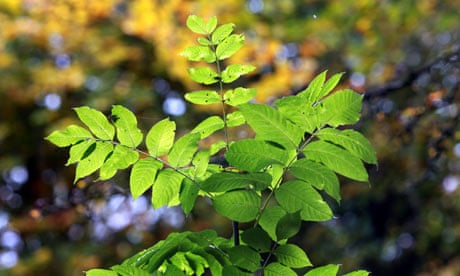More than 30 alien insects and mites, fungi, bacteria, viruses, diseases, pathogens and invasive plants, many with the potential to devastate native populations, are expected to reach Britain and other European countries in the next few years, according to the European plant protection organisation's alert list.
Some could arrive on imported trees and shrubs from Brazil or in soil from China or Africa, others via wooden ornaments and even packaging crates. But plant scientists say no one can predict exactly what ecological impact they will have because they are likely to behave differently in new environments than they do in the places where they have evolved over millennia.
When and if they come, they will join at least 10 new organisms that have arrived in the last few years and now threaten swaths of forest and woodland. Some could die out in months and do no damage but others could spread rapidly, as Dutch elm disease did in the 1960s or as ash dieback may do in the next decade, said Joan Webber, principal pathologist and head of the tree health research group at the Forestry Commission. "There's been a massive jump in the number of pathogens in the last 10 years. It's a combination of climate change , trade and other factors."
Webber said the fashion for "instant landscapes" and the planting of very large trees increased the risks of pathogens and diseases spreading. "There is a greater appetite for more exotic and bigger plants. Some plants are shipped in from China or elsewhere with 1,000 litres of soil around them. That soil is a black box full of billions of bacteria. It's very difficult to inspect and intercept harmful organisms in large plants."
It was also increasingly difficult to identify and control new organisms, she said. "They can reinvent themselves when they move into an unknown habitat. Faced with plants which may have little or no resistance to them, they can change quickly."
Ash dieback surprised some of Britain's most experienced tree experts. "Until this happened, I would have thought that the emerald ash borer [a green beetle native to Asia] would have wiped out all our ash trees. It's not here yet but it's on its way," said Tony Kirkham, head of the arboretum and horticultural services at the Royal Botanic Gardens at Kew.
Martin Ward, the UK's chief plant health officer, said the EU plant health regime was not good enough but world trade rules prevented member states imposing outright bans.
"We need a much better early warning system to know what is coming in to Europe. Experts from across Europe must work together more," he said. "The whole system is under review. It will call for more surveys, contingency planning and better regulation of the movement of plants within the EU. But it will take at least a year to be agreed, and it is terrifying what is out there."
